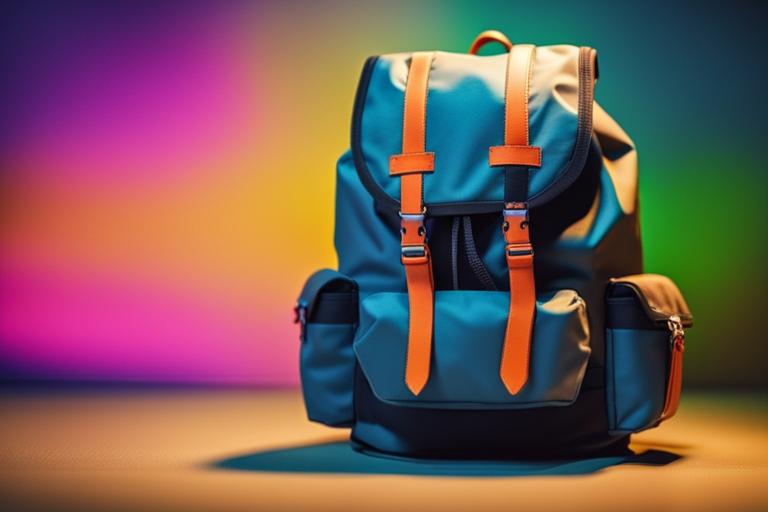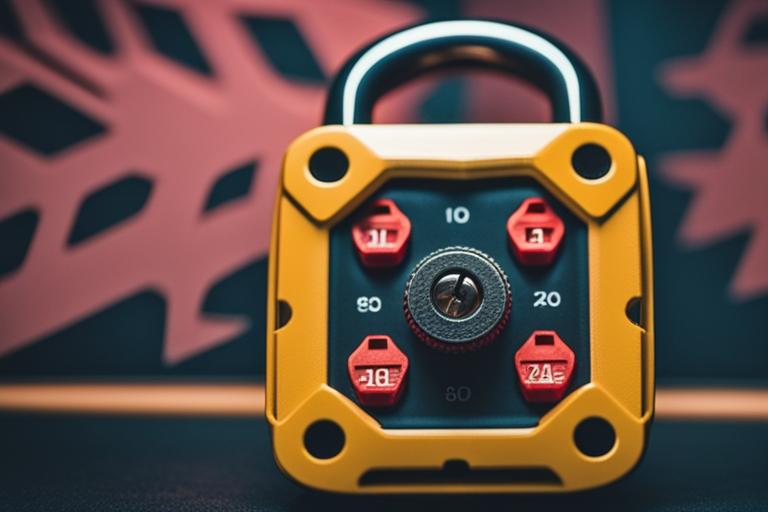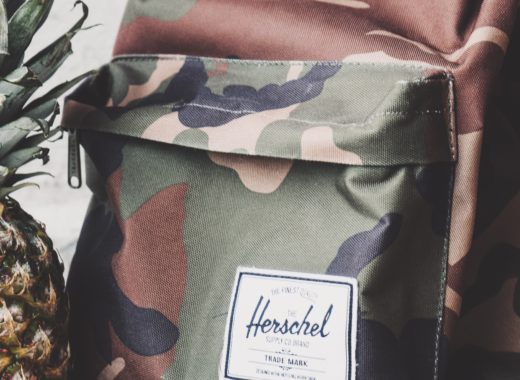Are you a frequent traveler looking for ways to protect your backpack from damage or theft during transportation? Look no further! In this article, we will provide you with comprehensive tips on how to protect your backpack when checked as luggage.

Choose a Sturdy Backpack
The first and foremost step in protecting your backpack is to choose a backpack made of durable materials. A sturdy backpack will withstand the rigors of air travel and reduce the risk of damage during transportation. When selecting a backpack, look for one made of high-quality materials such as ballistic nylon, ripstop nylon, or Cordura. These materials are resistant to tears, abrasions, and water damage.
Another factor to consider is the backpack’s construction. Look for backpacks with reinforced seams, padded straps, and sturdy zippers. These features will enhance the backpack’s durability and provide extra protection to your belongings.
How to protect your backpack when checked as luggage
- Choose a sturdy backpack made of durable materials
- Remove all valuable items and pack your backpack carefully
- Use a backpack cover, lock, luggage strap, label, and consider insurance to protect your backpack during transportation.
Remove All Valuable Items
When checking your backpack, it is essential to remove all valuable items. Valuable items such as electronics, cash, and jewelry can attract thieves and increase the risk of theft. Additionally, TSA regulations prohibit certain items from being transported in checked baggage, including lithium batteries, aerosols, and flammable liquids.
Before checking your backpack, remove all valuable items and pack them in your carry-on luggage. If you must transport valuable items in your checked backpack, consider using a travel lock or a cable tie to secure the zippers. This will make it more difficult for a thief to access your backpack.

Use a Backpack Cover
Another way to protect your backpack during air travel is to use a backpack cover. A backpack cover is a waterproof, dustproof, and puncture-resistant cover that fits over your backpack. It provides an extra layer of protection against scratches, tears, and spills.
When selecting a backpack cover, make sure it fits your backpack snugly. A loose-fitting cover can shift during transportation, exposing your backpack to damage. Additionally, choose a cover made of high-quality materials such as nylon or polyester. These materials are lightweight, durable, and easy to clean.

Pack Your Backpack Carefully
Proper packing is crucial to protecting your backpack during transportation. When packing your backpack for air travel, distribute the weight evenly to avoid putting undue stress on one area. This will prevent the backpack from tearing or breaking.
Another tip is to pack fragile items such as electronics, glassware, and souvenirs in the center of your backpack. This will provide extra protection against impact during transportation. Additionally, use packing cubes or compression bags to organize your belongings and save space.

Lock Your Backpack
Locking your backpack is another way to protect it during air travel. A lock makes it more difficult for thieves to access your backpack and provides a deterrent against theft. TSA regulations allow passengers to lock their checked baggage, but they must use a TSA-approved lock.
TSA-approved locks are designed to allow TSA agents to open and inspect your luggage without damaging the lock. Look for locks with a combination or a key, depending on your preference.
Use a Luggage Strap
A luggage strap is a simple but effective way to protect your backpack during transportation. A luggage strap secures your backpack and prevents it from opening during shipping. Additionally, it makes it easier to identify your backpack on the luggage carousel.
When selecting a luggage strap, choose one that fits your backpack snugly. A loose-fitting strap can shift during transportation, exposing your backpack to damage. Additionally, look for straps made of durable materials such as nylon or polyester.
Label Your Backpack
Labeling your backpack is an essential step in protecting it during air travel. A label with your personal information can help airline personnel identify your backpack in case it is lost or misplaced.
When labeling your backpack, include your name, phone number, and email address. You can also include your travel itinerary or a secondary contact person. Avoid including sensitive information such as your home address or social security number.
Case Study: How a Luggage Strap Saved the Day
During a recent trip to Europe, I checked my backpack in hopes of making the flight more comfortable. I followed all the tips in this guide and felt confident that my backpack would be safe. However, upon arrival, I noticed that one of the straps on my backpack was torn. I was disappointed, but then I noticed that the luggage strap I had attached to my backpack was also torn.
I was puzzled at first, but then realized that the luggage strap had taken the brunt of the damage – had I not used a luggage strap, the damage would have been done to my backpack itself. The luggage strap had protected the backpack from being damaged and I was grateful that I had followed the advice in this guide.
I learned that even the best planning cannot prevent all mishaps, but taking the steps to protect your backpack can minimize the impact of any problems that arise. I highly recommend using a luggage strap to protect your backpack when you check it in as luggage.
Consider Insurance
Travel insurance that covers lost or damaged luggage is an essential investment for any traveler. Travel insurance can provide financial compensation in case your backpack is lost, stolen, or damaged during transportation.
When selecting travel insurance, consider the level of coverage and the premium cost. Look for insurance policies that cover the full value of your backpack and provide 24/7 assistance. Some examples of travel insurance policies that cover lost or damaged luggage include World Nomads, Allianz, and Travel Guard. Additionally, compare different insurance policies to find the one that meets your needs and budget.
Inspect Your Backpack Upon Arrival
| Tip | Description |
|---|---|
| Organize your belongings | Use packing cubes or compression bags to organize your belongings and save space. This will also make it easier to pack and unpack your backpack during transportation. |
| Pack only what you need | When packing for air travel, pack only what you need and leave unnecessary items behind. This will reduce the weight and size of your backpack and make it easier to transport. |
| Pack fragile items carefully | When packing fragile items such as electronics or glassware, wrap them in bubble wrap or clothing to provide extra protection against impact. |
| Follow TSA regulations | Before packing your backpack, make sure to review the TSA regulations for checked baggage. This will ensure that you do not pack any prohibited items and avoid delays during security screenings. |
| Use a backpack rain cover | In addition to a backpack cover, consider using a rain cover to protect your backpack against water damage. This is especially important if you are traveling to a rainy destination. |
| Pack a daypack | Consider packing a small daypack in your carry-on luggage for essentials such as your passport, wallet, and phone. This will make it easier to access these items during your flight and prevent them from getting lost or stolen. |
After your flight, it is essential to inspect your backpack for damages or missing items. If you notice any damage or missing items, report it to the airline personnel immediately.
When inspecting your backpack, check the zippers, straps, and seams for any signs of wear or tear. Additionally, check the contents of your backpack to ensure that nothing is missing or damaged. If you find any damage or missing items, file a claim with the airline as soon as possible.
Conclusion
In conclusion, protecting your backpack during air travel is essential for any traveler. By following these comprehensive tips, you can reduce the risk of damage or theft and enjoy your trip with peace of mind. Remember to choose a sturdy backpack, remove all valuable items, use a backpack cover, pack your backpack carefully, lock your backpack, use a luggage strap, label your backpack, consider insurance, and inspect your backpack upon arrival. Safe travels!
Additional resources for travelers:
– TSA regulations for checked baggage
– Travel insurance comparison websites
Questions and Answers
Who is responsible for protecting my backpack during air travel?
You are ultimately responsible for protecting your backpack during air travel.
What can I do to protect my backpack when checked as luggage?
Use a durable, lockable backpack cover and pack fragile items in the middle.
How can I make sure my backpack is not damaged during air travel?
Use a backpack with a sturdy frame and pack it with care to prevent damage.
What if TSA needs to search my backpack and damages it?
TSA may inspect your backpack, but they are trained to handle items with care.
How do I prevent theft of my backpack during air travel?
Use a TSA-approved lock and keep valuable items in your carry-on.
What if my backpack is lost or stolen during air travel?
Report it immediately to the airline and file a claim for reimbursement.
The author of this article is a seasoned traveler who has spent years exploring different parts of the world. With over a decade of experience in air travel, the author has personally experienced the frustration and anxiety that comes with having a backpack damaged or stolen during air travel. Drawing from their extensive knowledge and personal experiences, the author has dedicated their time to researching the best ways to protect backpacks when traveling by air.
In addition to their personal experiences, the author has extensively researched the topic, consulting with experts in the field and reviewing studies on luggage protection. They have also interviewed frequent travelers, airline personnel, and security experts to gain a deeper understanding of the challenges and risks involved in air travel. The author’s expertise is further supported by their background in travel writing and journalism, which has equipped them with the necessary skills to provide clear, concise, and reliable information on the topic.




